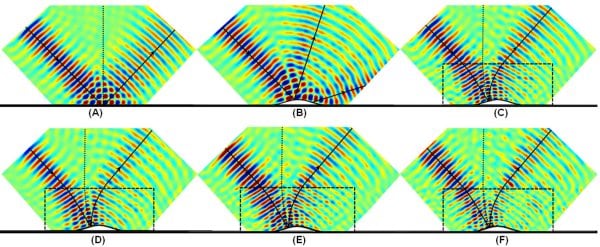
A new kind of “invisibility cloak” that conceals an object lying on a flat, reflective surface has been built by researchers in the US. The device is an improvement over earlier microwave cloaks as it operates over a wide, rather than a narrow, range of frequencies.
Built by a team led by David Smith at Duke University in the US, the device is a metamaterial made from thousands of tiny H-shaped metallic elements. It was designed using a novel computer algorithm, which the team believes could be used to create other invisibility cloaks that work for infrared or even visible light.
Smith and his colleagues unveiled the world’s first invisibility cloak in 2006, which consisted of a cylindrical arrangement of split-ring resonators. By varying the shape, size and arrangement of the resonators, the electrical permittivity and the magnetic permeability of the cloak could be varied at any point within it. He and his team then used the theory of transformation optics to determine which permittivity and permeability values would steer the microwave radiation smoothly around the object.
Although the cloak was a success — it was named by Science magazine and physicsworld.com as one of the biggest breakthroughs of 2006 — it had several major drawbacks. In particular, it worked only over a tiny frequency range and was therefore not practical for concealing something from microwave-based radar. In addition, the cloak tended to absorb much of the microwave radiation that passed through it, which could reveal the presence of a concealed object.
Drop the magnetic response
According to Smith, these problems are related to the fact that split-ring resonators have both a magnetic and electrical response to microwaves. This concern was addressed by Jensen Li and John Pendry at Imperial College, London, who last year calculated that a broadband and low-loss cloak could be made from a metamaterial with only an electrical response. Exactly such a cloak is what Smith and colleagues have now built.
Their metamaterial is a matrix of 10,000 elements (H-shaped pieces of metal), which are arranged in a flat sheet that is five elements thick. A thin edge of the sheet is placed on a reflective surface such that there is an empty pocket between surface and sheet. The object to be concealed is placed in this pocked (see figures).
The team tested the cloak by firing microwaves along the sheet so they would normally pass through the pocket and reflect back to a detector, revealing the presence of the object. But instead of reaching the object, the microwaves reflect from the pocket such that it appears that the pocket and object are not there. This was tested using microwaves between 13 and 17 GHz, but Smith believes that the cloak’s bandwidth could extend down below 1 GHz.
Designing thousands of elements
According to Smith, the big challenge in creating the device was sorting through the many different ways of designing and arranging individual elements to achieve the required transformation. In 2006, the problem was solved by designing one element at a time, creating a library of about 10 different elements that could do the job. This time, however, thousands of elements were needed, so Smith and colleagues developed a computer algorithm to automate the process.
They began by choosing a specific structure — the H-shape in this case — and then calculated the microwave response of a relatively small number of H-shapes that differed in width. The results were used to create a mathematical model that relates the microwave response to element width and a searching algorithm is used to work out how to best arrange elements of different widths to create the desired cloak.
The result was a matrix of about 10,000 elements — 6000 of which were unique. The elements were then created on a printed circuit board using standard computer-automated design and milling techniques.
According to Smith, the algorithm could be used to design a variety of different devices including cloaks and superlenses, which could boost the performance of imaging systems. As for the cloak itself, Smith says that in principle it could be used to conceal objects from microwaves and therefore could be used to minimize interference between co-located communications antennas by making the antennas invisible to each other.




